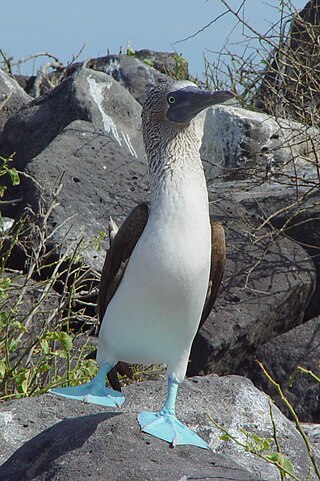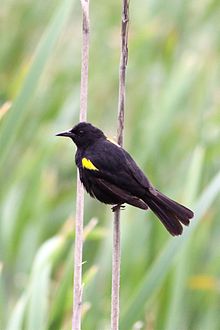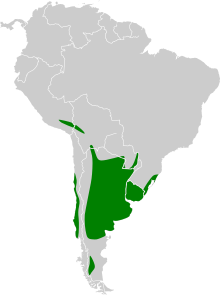
Penguins are a group of aquatic flightless birds from the family Spheniscidae of the order Sphenisciformes. They live almost exclusively in the Southern Hemisphere: only one species, the Galápagos penguin, is found north of the Equator. Highly adapted for life in the ocean water, penguins have countershaded dark and white plumage and flippers for swimming. Most penguins feed on krill, fish, squid and other forms of sea life which they catch with their bills and swallow whole while swimming. A penguin has a spiny tongue and powerful jaws to grip slippery prey.

The International Union for Conservation of Nature (IUCN) Red List of Threatened Species, also known as the IUCN Red List or Red Data Book, founded in 1964, is an inventory of the global conservation status and extinction risk of biological species. A series of Regional Red Lists, which assess the risk of extinction to species within a political management unit, are also produced by countries and organizations.

The genus Perisoreus is a very small genus of jays from the Boreal regions of North America and Eurasia from Scandinavia to the Asian seaboard. An isolated species also occurs in north-western Sichuan of China. They belong to the Passerine order of birds in the family Corvidae. Species of Perisoreus jays are most closely related to the genus Cyanopica.

A booby is a seabird in the genus Sula, part of the family Sulidae. Boobies are closely related to the gannets (Morus), which were formerly included in Sula.

The snowcocks or snowfowl are a group of bird species in the genus Tetraogallus of the pheasant family, Phasianidae. They are ground-nesting birds that breed in the mountain ranges of southern Eurasia from the Caucasus to the Himalayas and western China. Some of the species have been introduced into the United States. Snowcocks feed mainly on plant material.

The Sunda scops owl is a small brown owl native to the Sunda Islands.
This article is a list of biological species, subspecies, and evolutionary significant units that are known to have become extinct during the Holocene, the current geologic epoch, ordered by their known or approximate date of disappearance from oldest to most recent.

The unicolored blackbird is a species of bird in the family Icteridae. Found in Argentina, Bolivia, Brazil, and Paraguay, its natural habitat is swamps and nearby grassland. It is a fairly common bird and the International Union for Conservation of Nature has rated it a "least-concern species".

Agelasticus is a genus of birds in the New World oriole family Icteridae. They have slender forms and thin bills. The females are responsible for building the nest, unlike some of their close relatives. The genus is found in South America.

The pale-eyed blackbird is a species of bird in the family Icteridae. It is found in Ecuador and Peru where its natural habitat is swamps. An inconspicuous bird of very local occurrence, it was first described in 1969 by American ornithologist Lester L. Short.











